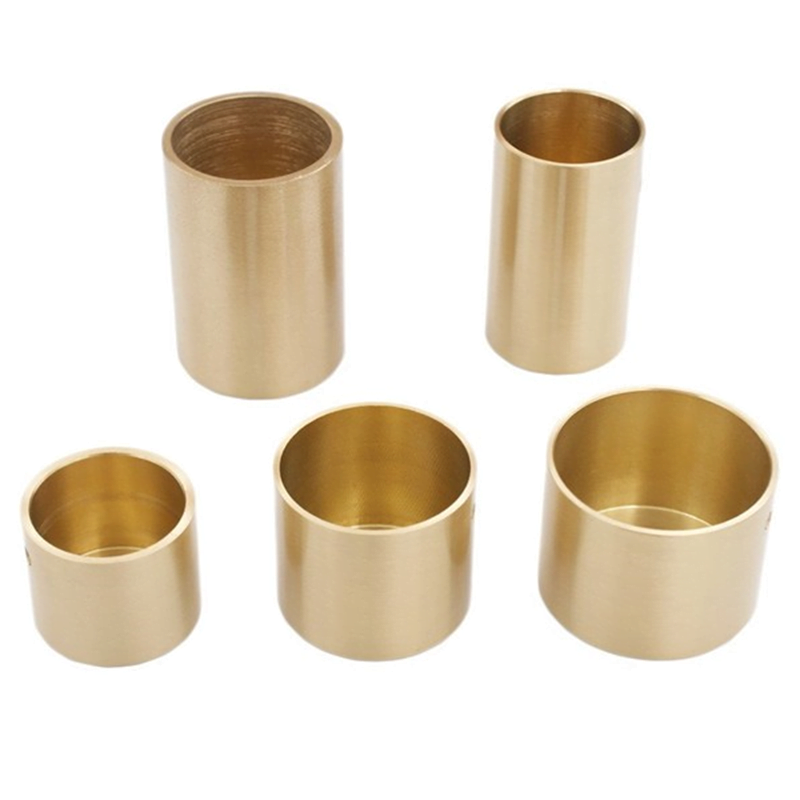
介紹
鋁製青銅管由於其出色的導熱率,耐腐蝕性和耐用性而在工業熱交換器應用中變得越來越重要。本指南探討了最大化傳熱效率和運營性能的優化策略。
物質特性和選擇
用於熱交管管的標準鋁青銅等級
| 年級 | 作品 | 導熱係數(W/m·K) | 關鍵應用程序 |
|---|---|---|---|
| C61300 | 銅鋁鎳鐵 | 45-52 | 化學加工 |
| C61400 | cu-al-ni-fen | 42-48 | 海洋熱交換器 |
| C63000 | cu-al-fu | 38-45 | 高壓系統 |
| C63200 | cu-al-fa-six-si | 40-46 | 腐蝕性環境 |
比較性能指標
| 財產 | 鋁青銅 | 不銹鋼 | 銅鎳合金 |
|---|---|---|---|
| 導熱係數 | 40-52 w/m·k | 16-24 w/m·k | 30-45 w/m·k |
| 耐腐蝕性能 | 優秀的 | 好的 | 非常好 |
| 污染阻力 | 高的 | 緩和 | 緩和 |
| 成本因素 | 1.5-2.0x | 1.0x | 1.3-1.8x |
設計優化策略
1。管幾何優化
| 範圍 | 標準範圍 | 優化範圍 | 效率影響 |
|---|---|---|---|
| 室壁厚度 | 0.9-1.2mm | 0.7-1.0mm | +5-8% |
| 內表面飾面 | RA 1.6-3.2 | RA 0.8-1.6 | +3-5% |
| 管螺距 | 1.25-1.5d | 1.15-1.25d | +4-7% |
2。流配置優化
| 配置 | 應用 | 效率提高 | 壓降 |
|---|---|---|---|
| 反流 | 高ΔT | 基本參考 | 緩和 |
| 增強的櫃檯流 | 關鍵服務 | +10-15% | 高的 |
| 多通 | 有限的空間 | +5-8% | 高的 |
| 跨流 | 汽油冷卻 | +3-5% | 低的 |
性能增強技術
1。表面增強方法
| 方法 | 描述 | 效率提高 | 成本影響 |
|---|---|---|---|
| 內部凹槽 | 螺旋凹槽 | +15-20% | +30% |
| 外部鰭 | 整體鰭 | +25-30% | +40% |
| 努力 | 表面紋理 | +10-15% | +20% |
| 微通道 | 內部頻道 | +20-25% | +45% |
2。流分佈優化
| 技術 | 執行 | 益處 | 考慮 |
|---|---|---|---|
| 入口葉片 | 流動導演 | 甚至分佈 | 壓降 |
| 擋板間距 | 優化的差距 | 更好的混合 | 維護 |
| 通過安排 | 多次通過 | 較高的速度 | 複雜 |
| 標題設計 | 流均衡器 | 均勻的流動 | 成本 |
操作參數
1。建議的操作條件
| 範圍 | 正常範圍 | 最大範圍 | 最佳範圍 |
|---|---|---|---|
| 流體速度 | 1.0-2.5 m/s | 0.5-3.0 m/s | 1.5-2.0 m/s |
| 溫度 | 20-150°C | -10-200°C | 40-120°C |
| 壓力 | 高達 20 巴 | 高達 40 巴 | 10-15條 |
| pH值範圍 | 6.5-8.5 | 5.0-9.0 | 7.0-8.0 |
2。性能監視參數
| 範圍 | 測量方法 | 頻率 | 動作閾值 |
|---|---|---|---|
| 傳熱係數 | 溫度傳感器 | 日常的 | <85% design |
| 壓降 | 壓力表 | 小時 | >120% design |
| 流速 | 流量計 | 連續的 | <90% design |
| 結垢因子 | 計算 | 每週 | >120% design |
維護和效率保存
1。清潔時間表
| 服務類型 | 清潔方法 | 頻率 | 效率影響 |
|---|---|---|---|
| 輕便責任 | 化學清潔 | 6個月 | +5-10% |
| 中等職責 | 機械清潔 | 3個月 | +10-15% |
| 重負 | 組合方法 | 每月 | +15-20% |
2。預防性維護
| 活動 | 頻率 | 目的 | 對效率的影響 |
|---|---|---|---|
| 檢查 | 每月 | 早期檢測 | 保持基線 |
| 測試 | 季刊 | 性能驗證 | +2-5% |
| 打掃 | 根據需要 | 去除犯罪 | +5-15% |
| 替代品 | 5 - 10年 | 可靠性 | 返回設計 |
效率優化案例研究
案例研究1:化學加工廠
- 應用:流程冷卻器
- 優化:增強的管表面
- 結果:
- 效率提高了25%
- 減少30%的能源成本
- 40%更長的清潔間隔
案例研究2:發電
- 應用:蒸汽冷凝器
- 優化:流分佈
- 結果:
- 提高效率15%
- 降低抽水功率的20%
- 維護降低35%
成本效益分析
1。投資考慮
| 改進 | 費用溢價 | 投資回報期 | ROI |
|---|---|---|---|
| 基本管 | 根據 | 根據 | 根據 |
| 增強的表面 | +30% | 1。5年 | 180% |
| 優化設計 | +20% | 1。2年 | 200% |
| 聯合解決方案 | +45% | 2.0年 | 160% |
2。運營節省
| 類別 | 潛在的節省 | 實施成本 | 淨收益 |
|---|---|---|---|
| 活力 | 15-25% | 中等的 | 高的 |
| 維護 | 20-30% | 低的 | 很高 |
| 替代品 | 30-40% | 高的 | 中等的 |
最佳實踐摘要
- 設計階段
- 優化管幾何形狀
- 選擇合適的等級
- 考慮增強功能
- 計劃維護
- 安裝
- 適當的管支撐
- 正確的流對齊
- 品質管制
- 性能測試
- 手術
- 監視密鑰參數
- 保持最佳條件
- 定期檢查
- 預防性維護
- 維護
- 定期清潔
- 效能監控
- 狀況評估
- 及時更換
未來趨勢
- 物質發展
- 高級合金
- 表面處理
- 納米塗料
- 智能材料
- 設計創新
- 3D打印應用程序
- 計算優化
- 混合系統
- 模塊化設計
結論
在熱交換器中優化鋁青銅管需要:
- 仔細的材料選擇
- 適當的設計注意事項
- 定期維護
- 效能監控
- 持續改進
正確實施後,這些策略可能會導致:
- 提高效率15-30%
- 20-40%的維護成本降低
- 25-35%的節能
- 延長使用壽命
優化的投資通常在1 - 2年內為自己支付,同時提供長期運營福利和提高的可靠性。
